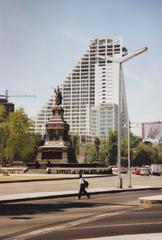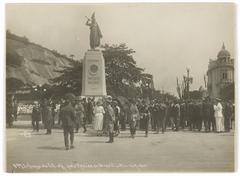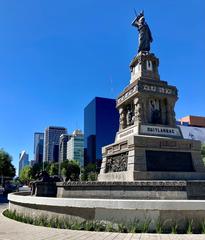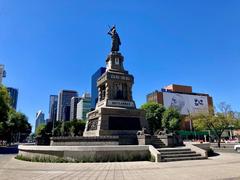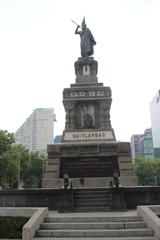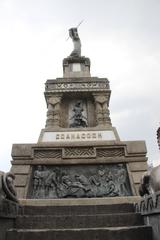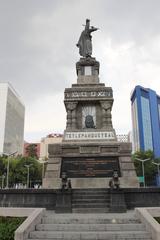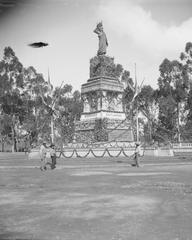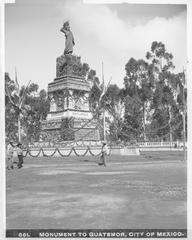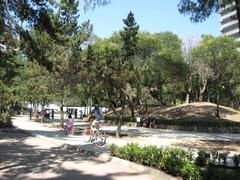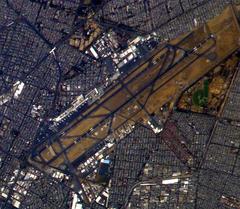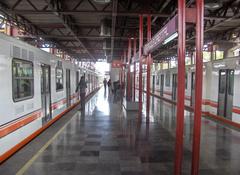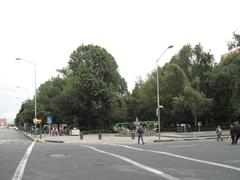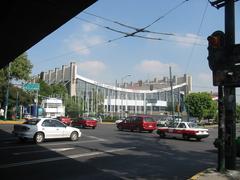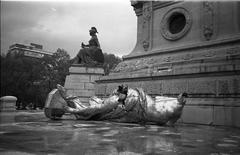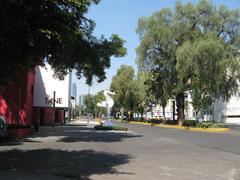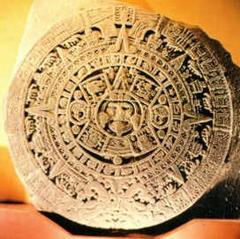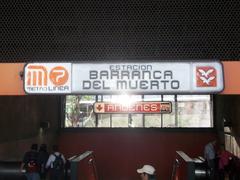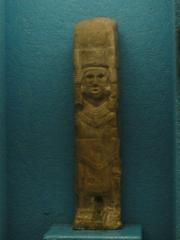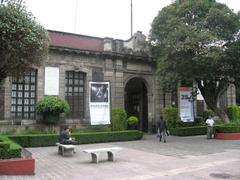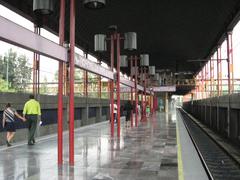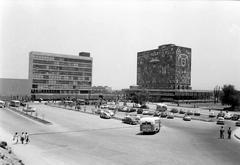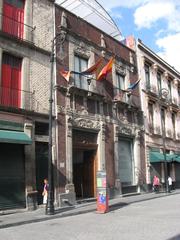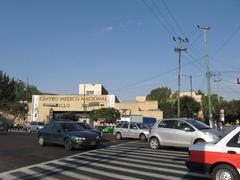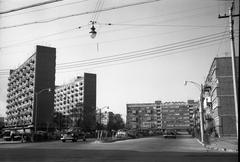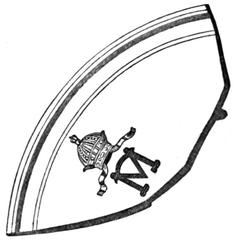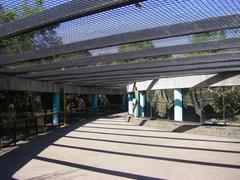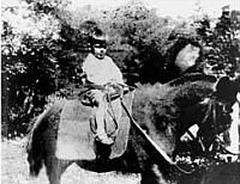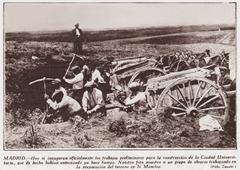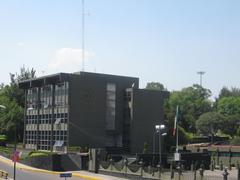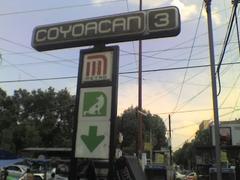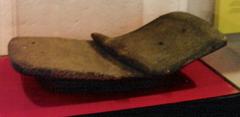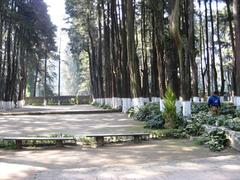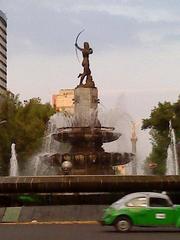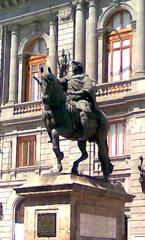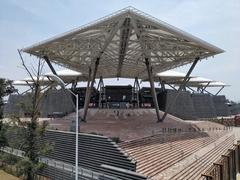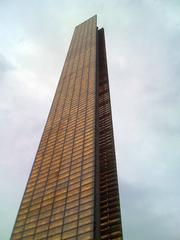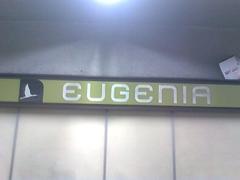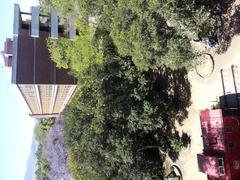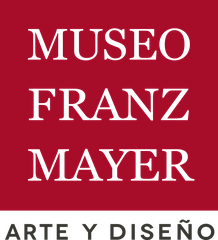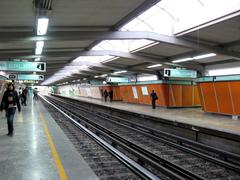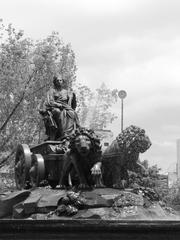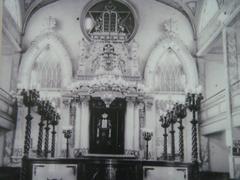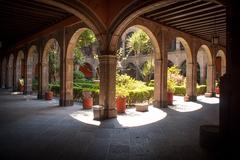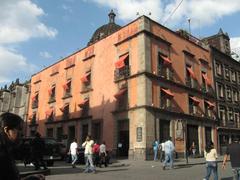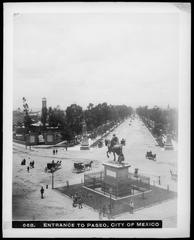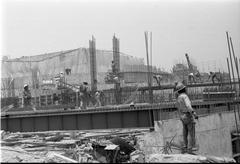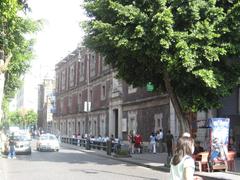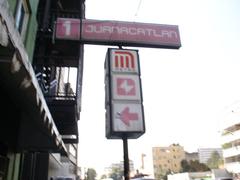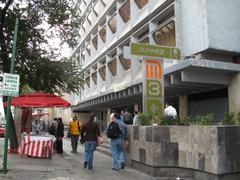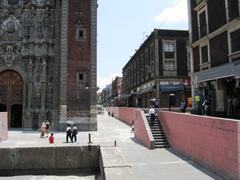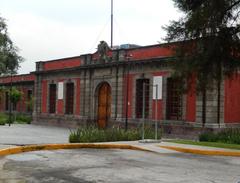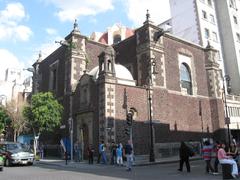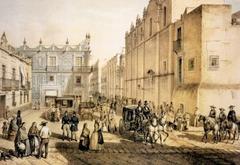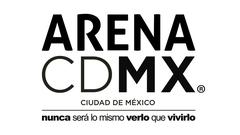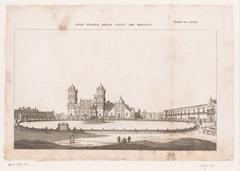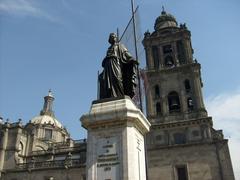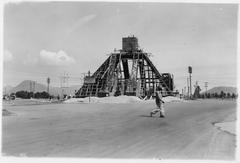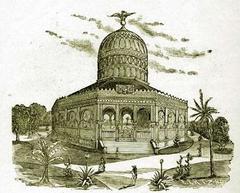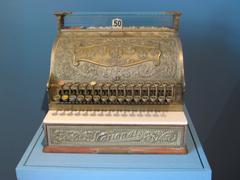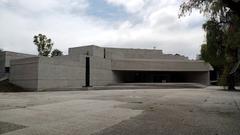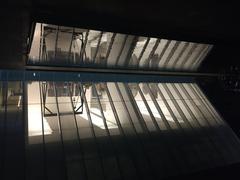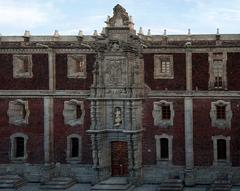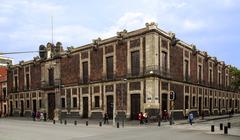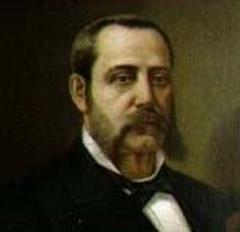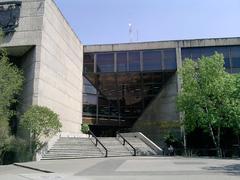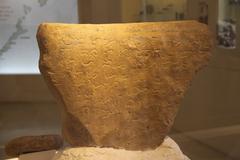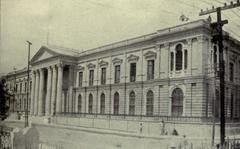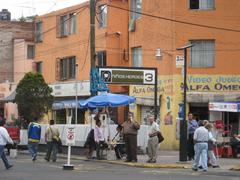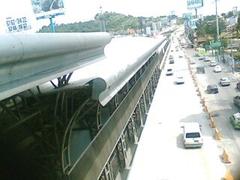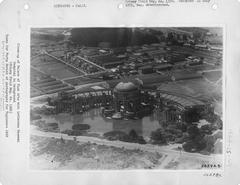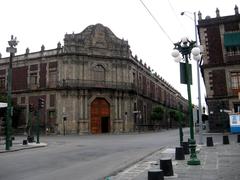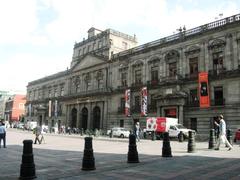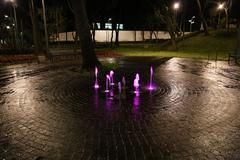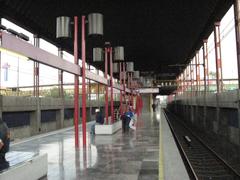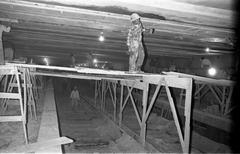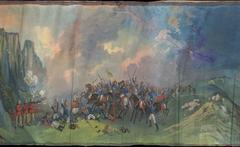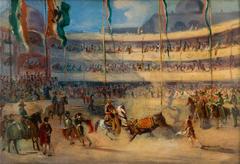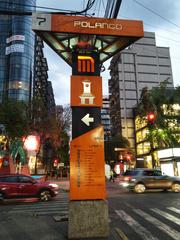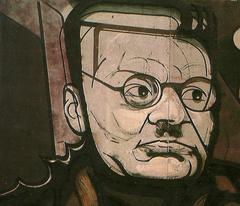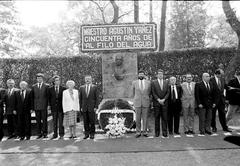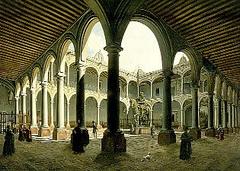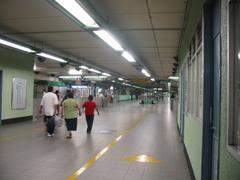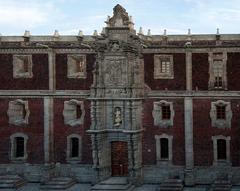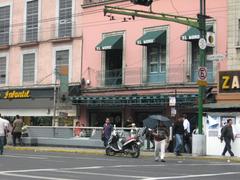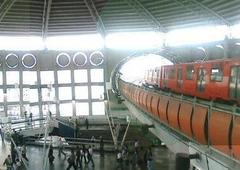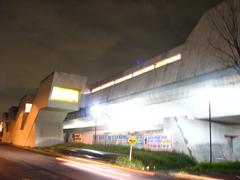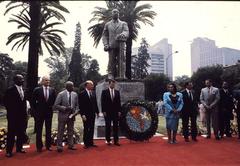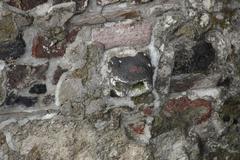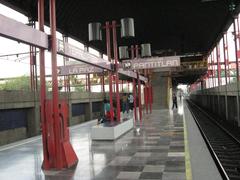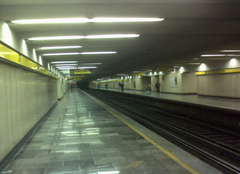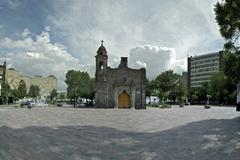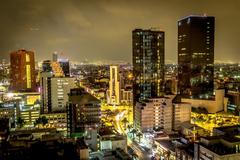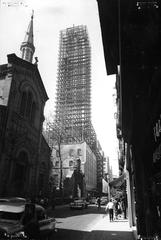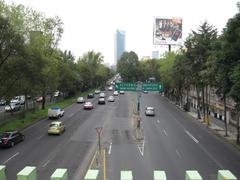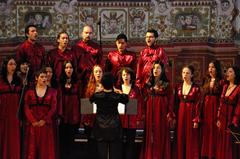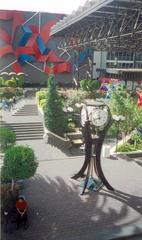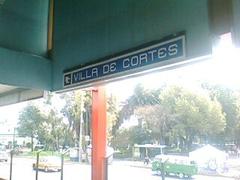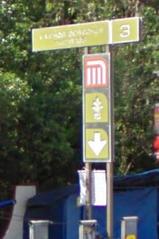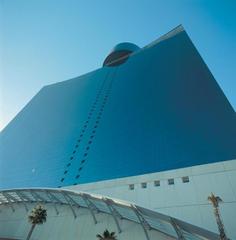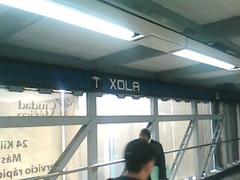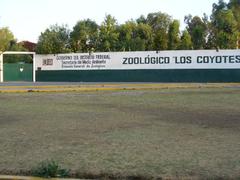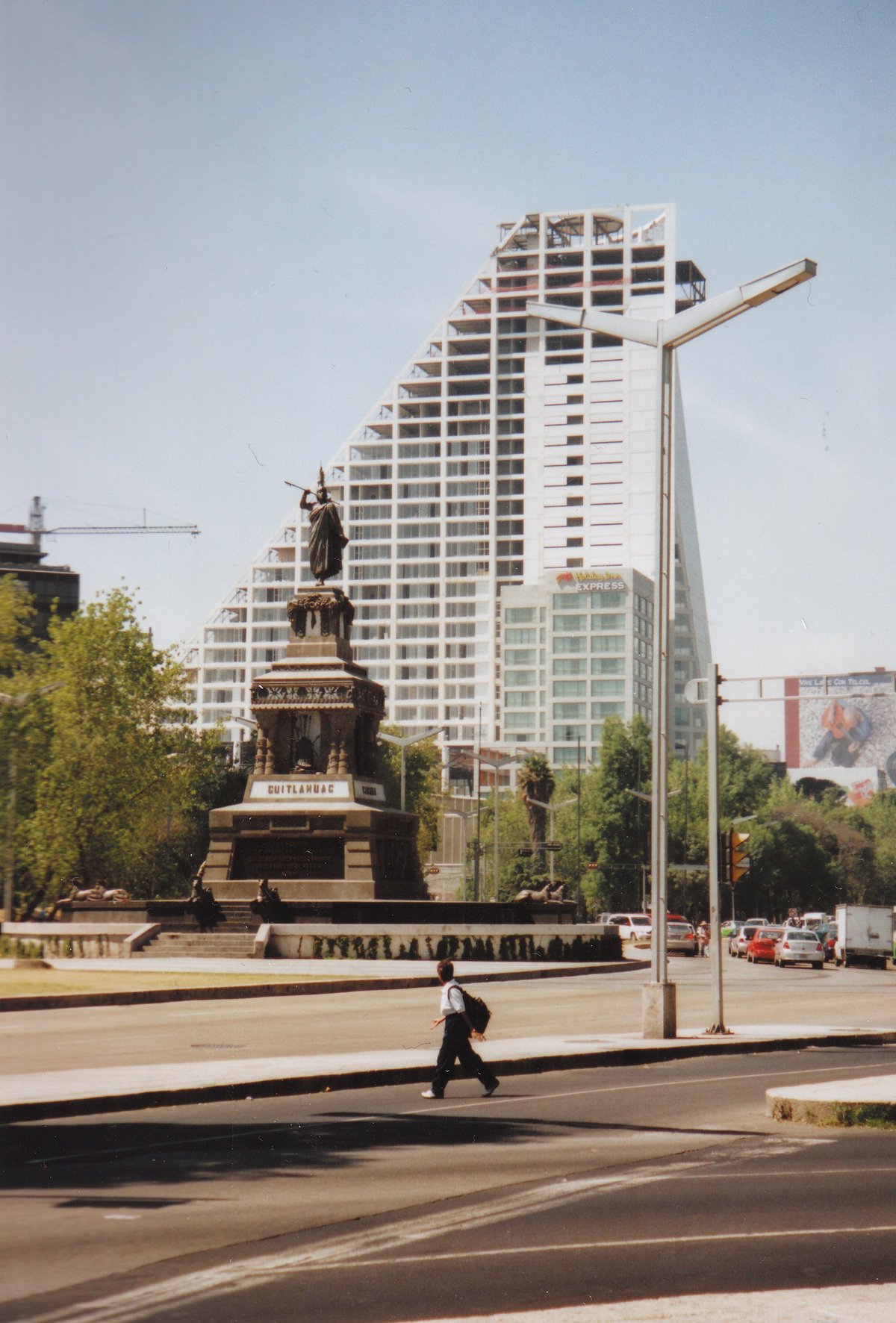
Comprehensive Guide to Visiting Monumento a Cuauhtémoc, Mexico City, Mexico
Date: 19/07/2024
Introduction
The Monumento a Cuauhtémoc is an iconic landmark in Mexico City, symbolizing Mexico’s rich indigenous heritage and the resilience of the Aztec civilization. Located on the bustling Paseo de la Reforma, this monument honors Cuauhtémoc, the last Aztec emperor, and serves as a testament to his valiant resistance against Spanish conquest. Constructed in the late 19th century during the presidency of Porfirio Díaz, the monument was designed by architect Francisco M. Jiménez and sculptor Miguel Noreña, embodying a blend of historical reverence and artistic excellence. The statue of Cuauhtémoc, cast in bronze, stands in a defiant pose, symbolizing his steadfast spirit (source). The intricate bas-reliefs on the pedestal narrate significant events from Cuauhtémoc’s life, while inscriptions in Nahuatl emphasize the monument’s dedication to preserving indigenous heritage. This comprehensive guide provides essential information for visitors, including historical context, visiting hours, ticket details, travel tips, and nearby attractions, ensuring a rich and informative experience at this culturally significant site.
History of Monumento a Cuauhtémoc
Origins and Construction
The Monumento a Cuauhtémoc was commissioned in the late 19th century during the presidency of Porfirio Díaz, a period marked by a surge in nationalistic fervor and a desire to celebrate Mexico’s indigenous heritage. The construction of the monument began in 1878 and was completed in 1887. The project was spearheaded by the renowned Mexican sculptor Miguel Noreña, who collaborated with architect Francisco M. Jiménez.
The monument stands prominently on the Paseo de la Reforma, one of Mexico City’s most important avenues. This location was chosen to symbolize the integration of Mexico’s pre-Hispanic past with its modern aspirations. The statue of Cuauhtémoc is cast in bronze and depicts the emperor in a defiant pose, symbolizing his resistance against the Spanish conquistadors. The pedestal is adorned with intricate bas-reliefs that narrate key events from Cuauhtémoc’s life and the fall of Tenochtitlán.
Cuauhtémoc - The Last Aztec Emperor
Cuauhtémoc ascended to the throne in 1520, during one of the most tumultuous periods in Aztec history. He was the nephew of the previous emperor, Moctezuma II, and took over leadership after the death of his cousin, Cuitláhuac. Cuauhtémoc’s reign was marked by his valiant efforts to defend Tenochtitlán, the Aztec capital, from the invading Spanish forces led by Hernán Cortés.
Despite his efforts, Tenochtitlán fell to the Spanish in 1521. Cuauhtémoc was captured and subjected to torture in an attempt to extract information about hidden treasures. He remained steadfast and is remembered as a symbol of resistance and resilience. His legacy is celebrated in Mexican history as a representation of indigenous pride and defiance against colonial oppression.
Symbolism and Artistic Elements
The Monumento a Cuauhtémoc is rich in symbolism, reflecting both the historical significance of Cuauhtémoc and the broader cultural identity of Mexico. The statue itself is a powerful representation of indigenous strength and resistance. Cuauhtémoc is depicted wearing traditional Aztec attire, including a feathered headdress and a loincloth, which are emblematic of his royal status and warrior spirit.
The pedestal of the monument is equally significant. It features four bronze plaques that depict scenes from Cuauhtémoc’s life and the conquest of Tenochtitlán. These bas-reliefs were crafted with meticulous attention to detail, capturing the dramatic and tragic moments of the Aztec empire’s final days. The inscriptions on the pedestal are in Nahuatl, the language of the Aztecs, further emphasizing the monument’s dedication to preserving indigenous heritage.
Restoration and Preservation
Over the years, the Monumento a Cuauhtémoc has undergone several restoration efforts to preserve its structural integrity and historical significance. One of the most notable restorations took place in 2004, when the monument was cleaned and repaired to address the wear and tear caused by pollution and weathering. The restoration process involved experts in art conservation and historians to ensure that the monument’s original features were meticulously preserved.
In addition to physical restoration, there have been efforts to enhance the monument’s accessibility and educational value. Informational plaques and guided tours have been introduced to provide visitors with a deeper understanding of Cuauhtémoc’s historical context and the monument’s artistic elements. These initiatives aim to foster a greater appreciation for Mexico’s rich cultural heritage among both locals and tourists.
Visitor Information
Visiting Hours and Tickets
The Monumento a Cuauhtémoc is open to the public year-round. While there is no entrance fee to view the monument itself, guided tours that provide in-depth historical context and artistic insights may have associated costs. It is advisable to check for any special events or temporary closures before planning your visit.
- Visiting Hours: The monument is accessible 24/7, but guided tours are usually available between 9:00 AM and 5:00 PM.
- Tickets: There is no charge to view the monument. However, guided tours may have a fee, typically ranging from $5 to $10 USD.
Travel Tips and Nearby Attractions
The Monumento a Cuauhtémoc is easily accessible via public transportation. Several bus and metro lines serve the area, making it convenient for visitors to reach the site.
- Public Transportation: The nearest metro station is Insurgentes (Line 1), and several bus routes stop along Paseo de la Reforma.
- Nearby Attractions: While visiting the monument, consider exploring other nearby attractions such as Chapultepec Park, the National Museum of Anthropology, and the Angel of Independence.
Cultural and Historical Impact
The Monumento a Cuauhtémoc holds a special place in the cultural and historical landscape of Mexico City. It serves as a reminder of the country’s indigenous roots and the enduring legacy of its pre-Hispanic civilizations. The monument is a focal point for various cultural events and ceremonies, particularly those that celebrate indigenous heritage and national identity.
One of the most significant events associated with the monument is the annual commemoration of Cuauhtémoc’s death on February 28. This day is marked by ceremonies and cultural performances that honor the memory of the last Aztec emperor and his contributions to Mexican history. The monument also serves as a gathering place for protests and demonstrations, symbolizing resistance and the fight for social justice.
Visitor Experience
For visitors to Mexico City, the Monumento a Cuauhtémoc offers a unique opportunity to connect with the country’s rich history and cultural heritage. The monument is easily accessible via public transportation, with several bus and metro lines serving the area. The surrounding Paseo de la Reforma is a vibrant and bustling avenue, lined with other significant landmarks, museums, and parks.
Visitors are encouraged to take their time exploring the monument and its intricate details. Guided tours are available for those who wish to gain a deeper understanding of Cuauhtémoc’s historical significance and the artistic elements of the monument. Additionally, the nearby Chapultepec Park and the National Museum of Anthropology provide further opportunities to explore Mexico’s pre-Hispanic history and culture.
Frequently Asked Questions (FAQ)
Q: What are the visiting hours for the Monumento a Cuauhtémoc? A: The monument is accessible 24/7, but guided tours are typically available between 9:00 AM and 5:00 PM.
Q: Is there an entrance fee to visit the Monumento a Cuauhtémoc? A: There is no charge to view the monument itself, but guided tours may have a fee ranging from $5 to $10 USD.
Q: How can I get to the Monumento a Cuauhtémoc? A: The monument is easily accessible via public transportation. The nearest metro station is Insurgentes (Line 1), and several bus routes stop along Paseo de la Reforma.
Q: Are there any special events held at the Monumento a Cuauhtémoc? A: Yes, one of the most significant events is the annual commemoration of Cuauhtémoc’s death on February 28, marked by ceremonies and cultural performances.
Q: What other attractions are near the Monumento a Cuauhtémoc? A: Nearby attractions include Chapultepec Park, the National Museum of Anthropology, and the Angel of Independence.
Conclusion
The Monumento a Cuauhtémoc stands as a testament to Mexico’s rich cultural heritage and the enduring legacy of its indigenous civilizations. Its historical significance, artistic elements, and cultural impact make it a must-visit landmark for anyone seeking to understand the complex and vibrant history of Mexico City. Plan your visit today and immerse yourself in the story of Cuauhtémoc, the last Aztec emperor, and the proud heritage he represents.
Call to Action
For more information and updates on visiting the Monumento a Cuauhtémoc, download the Audiala mobile app, check out our related posts, or follow us on social media. Stay connected and enrich your travel experiences!
References
- Comprehensive Guide to Visiting Monumento a Cuauhtémoc, Mexico City, Mexico (source)
